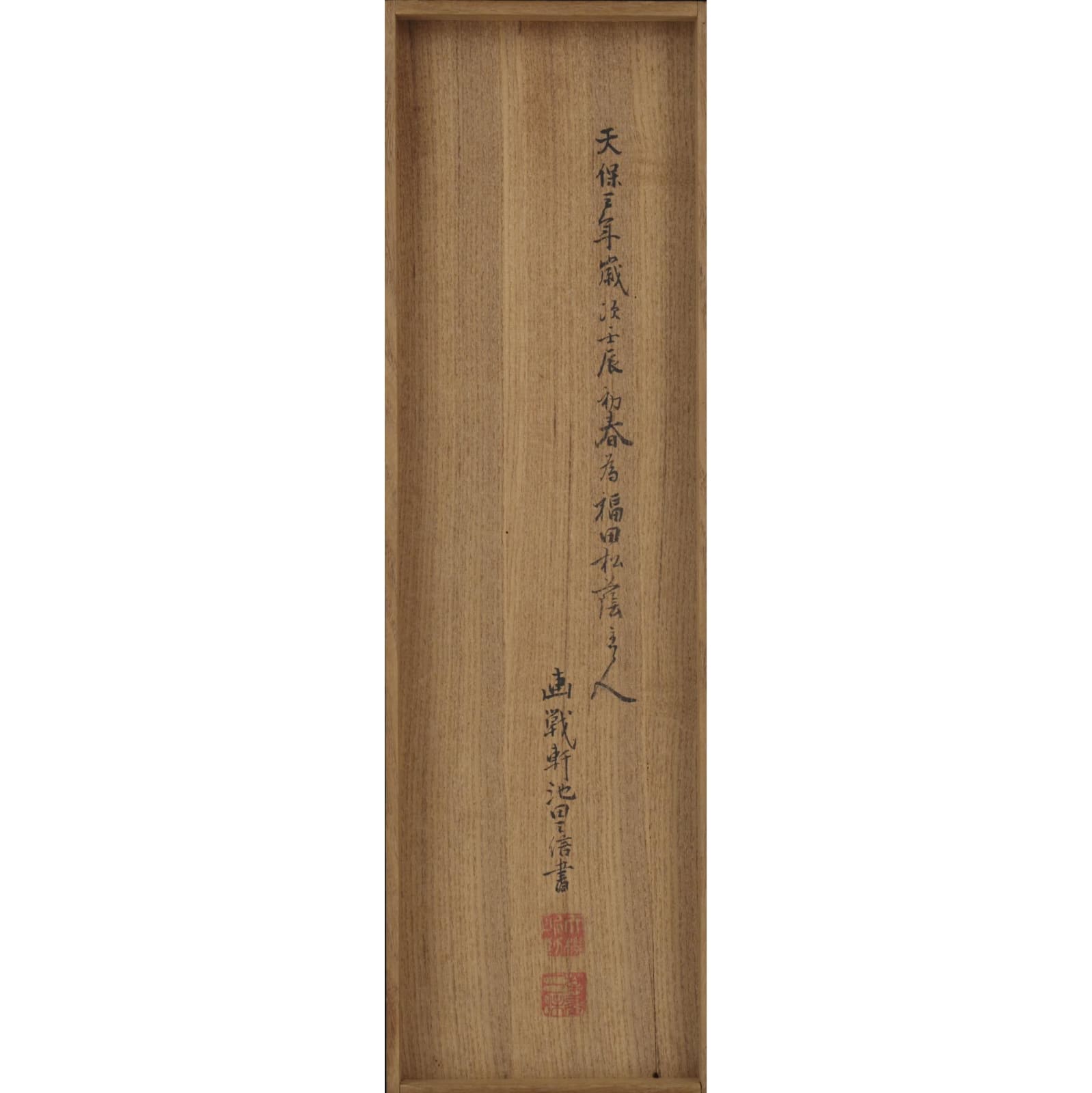Ikeda Koson (1803–1868)
Flowers and Birds in Spring and Autumn
Color and gold on silk, pair of hanging scrolls
With a box signed by the artist (1832)
Seals: Fujiwara Sanshin
89 x 30.1 cm each
186 x 42 cm each (overall)
With a box signed by the artist (1832)
Seals: Fujiwara Sanshin
89 x 30.1 cm each
186 x 42 cm each (overall)
Further images
The painter Ikeda Koson himself inscribed the title “Birds and flowers in spring and autumn, a pair of scrolls” on the lid of the box which contains these scrolls. In the spring scene on the right scroll, bracken sprouts, violets, young pines, butterburs, and sparrows are depicted, while in the autumn scene on the left scroll pampas grasses, arrowroots, balloon flowers, and a small bird. Executed in the style of his teacher Sakai Hoitsu, this painting is a typical work of the Edo Rinpa school. However, it also demonstrates his characteristics, not having ended up as a mere imitation. Koson displays a sense of rusticity as in comparison to the sophistication of Hoitsu, and a sense of substance as in comparison to the abstractness of Suzuki Kiitsu.
The artist inscribed on the back of the lid of the box in 1832: “For Fukuda Shoin, Gasen-ken Ikeda Sanshin.” Fukuda, for whom the present scrolls were executed, has not been identified. A who’s who in Edo published in 1838 records Koson as “Living in Fuyuki-cho, Fukagawa; Name: Sanshin; Sobriquet: Shuji; Appellent: Gasen-ken.” Fuyuki-cho was named after a wealthy merchant family Fuyuki, who inhabited the town before. At Koson’s time, another prosperous merchant Konoike Gihei had his villa there, where Koson had stayed.
As the “ken” of “Gasen-ken” is a suffix usually attached to the name of a house, a room, and an atelier, Koson probably painted this painting in his atelier Gasen-ken in Konoike’s villa in Fuyuki-cho.
Ikeda Koson (painter; 1803–1868)
Also known as Kyushoken; Gasenken; Shuji.
Echigo-born late Edo period painter. His real names is Sanshin. Admired Sakai Hoitsu, and learned painting under him. Regarded as the two greatest students of Hoitsu together with Suzuki Kiitsu.
The artist inscribed on the back of the lid of the box in 1832: “For Fukuda Shoin, Gasen-ken Ikeda Sanshin.” Fukuda, for whom the present scrolls were executed, has not been identified. A who’s who in Edo published in 1838 records Koson as “Living in Fuyuki-cho, Fukagawa; Name: Sanshin; Sobriquet: Shuji; Appellent: Gasen-ken.” Fuyuki-cho was named after a wealthy merchant family Fuyuki, who inhabited the town before. At Koson’s time, another prosperous merchant Konoike Gihei had his villa there, where Koson had stayed.
As the “ken” of “Gasen-ken” is a suffix usually attached to the name of a house, a room, and an atelier, Koson probably painted this painting in his atelier Gasen-ken in Konoike’s villa in Fuyuki-cho.
Ikeda Koson (painter; 1803–1868)
Also known as Kyushoken; Gasenken; Shuji.
Echigo-born late Edo period painter. His real names is Sanshin. Admired Sakai Hoitsu, and learned painting under him. Regarded as the two greatest students of Hoitsu together with Suzuki Kiitsu.









